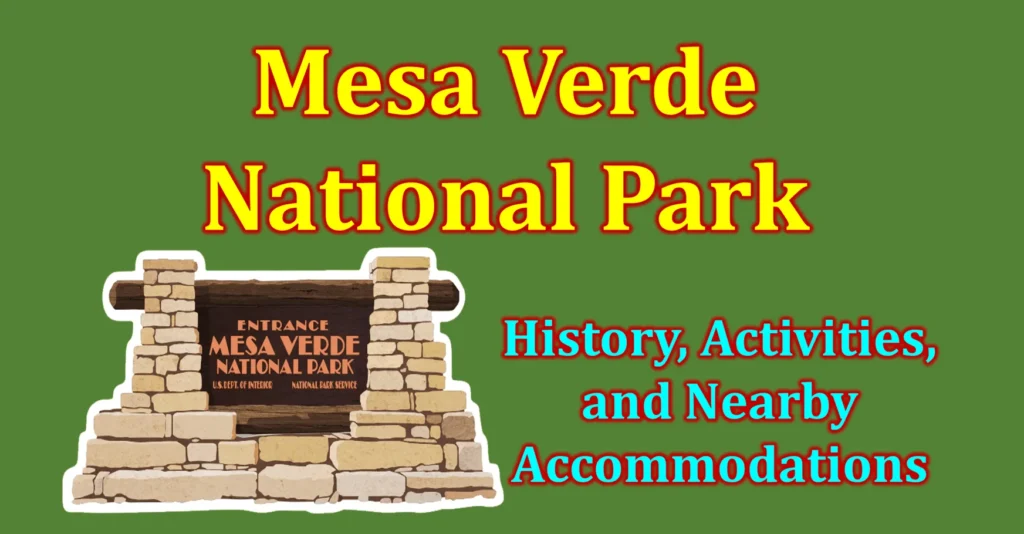
Introduction
Overview of Mesa Verde National Park
Mesa Verde National Park, located in the southwestern corner of Colorado, is a testament to the rich cultural heritage and ingenuity of the Ancestral Puebloans who inhabited the region over 700 years ago. Established in 1906 by President Theodore Roosevelt, the park was created to preserve the remarkable cliff dwellings and other archaeological treasures left behind by these ancient people. Covering over 52,000 acres, Mesa Verde is a UNESCO World Heritage Site and one of the most significant archaeological preserves in the United States.
Importance of the Park in American History and Archaeology
Mesa Verde holds a unique place in American history and archaeology due to its well-preserved structures and artifacts, which provide an invaluable glimpse into the lives of the Ancestral Puebloans. The park’s cliff dwellings, some of which have more than 150 rooms, showcase the architectural prowess and adaptability of this ancient culture. Archaeologists have discovered a wealth of information about the Puebloans’ social, agricultural, and spiritual practices, making Mesa Verde an essential site for understanding pre-Columbian North America.
The park’s significance extends beyond its archaeological treasures. It symbolizes the broader efforts to preserve America’s cultural and natural heritage, reflecting early conservation movements in the United States. The protection and study of Mesa Verde’s ruins have contributed to the development of archaeological methods and public appreciation for indigenous history, fostering a deeper respect for the diverse cultures that have shaped the American Southwest.
Quick Facts and Statistics About the Park
- Location: Montezuma County, Colorado, USA
- Size: Approximately 52,485 acres
- Elevation: Ranges from 6,000 to over 8,500 feet above sea level
- Established: June 29, 1906
- UNESCO World Heritage Site Status: Accredited in 1978
- Number of Cliff Dwellings: Over 600
- Annual Visitors: Around 600,000
- Notable Structures: Cliff Palace, Balcony House, Long House, and Spruce Tree House
Mesa Verde National Park is not only a haven for history enthusiasts and archaeologists but also a stunning natural landscape that offers a wealth of opportunities for exploration and discovery. Whether you’re captivated by ancient history, fascinated by archaeology, or simply seeking a breathtaking outdoor adventure, Mesa Verde invites you to step back in time and experience the enduring legacy of the Ancestral Puebloans.
The background of the Mesa Verde National Park
Discovery and Establishment of the Park

The story of Mesa Verde National Park begins in the late 19th century when the hidden cliff dwellings were first brought to the attention of the outside world. Although local cowboys and ranchers had known about the ruins for some time, it wasn’t until 1888 that ranchers Richard Wetherill and Charlie Mason made the first recorded discovery of Cliff Palace, one of the park’s most iconic structures. Their reports sparked interest among scholars and adventurers, leading to further exploration and documentation of the ancient sites.
The significance of these discoveries caught the attention of influential figures, including Swedish archaeologist Gustaf Nordenskiöld, who conducted the first scientific excavations in 1891. Nordenskiöld’s work and subsequent publications helped garner international interest and underscored the importance of preserving these unique cultural treasures. Recognizing the need for protection, President Theodore Roosevelt signed legislation on June 29, 1906, establishing Mesa Verde National Park as the first national park dedicated to preserving the works of humankind.
Significance of the Ancestral Puebloans
The Ancestral Puebloans, also referred to as the Anasazi, flourished in the Four Corners region of the United States from around 600 to 1300 AD, leaving behind a rich cultural legacy and impressive archaeological sites. Their legacy at Mesa Verde is a testament to their ingenuity, adaptability, and deep connection to the land. The cliff dwellings and other structures at Mesa Verde were built primarily between 1190 and 1270 AD, during a period of significant social and environmental change.
The Ancestral Puebloans were skilled builders, farmers, and artisans. They developed sophisticated techniques for constructing multi-story stone buildings, cultivating crops in the arid environment, and creating intricate pottery and textiles. Their cliff dwellings, nestled in the alcoves of steep canyon walls, provided shelter and protection from the elements and potential invaders. These structures reflect a high degree of community organization and resourcefulness, showcasing their ability to adapt to their surroundings and sustain a thriving society.
Key Archaeological Findings and Their Importance
The archaeological findings at Mesa Verde have provided a wealth of information about the Ancestral Puebloans and their way of life. Among the most significant discoveries are the cliff dwellings themselves, including Cliff Palace, Balcony House, Long House, and Spruce Tree House. These structures, with their complex layouts and well-preserved rooms, offer invaluable insights into the social organization, daily activities, and architectural prowess of the ancient inhabitants.
Artifacts such as pottery, tools, and clothing have also been uncovered, shedding light on the Puebloans’ daily lives, trade networks, and artistic traditions. For instance, the intricate designs on pottery pieces reveal a sophisticated aesthetic sensibility and the presence of trade with neighboring cultures. Tools and agricultural implements highlight their ingenuity in farming and food production, essential for survival in the harsh environment.
Additionally, the study of human remains and burial sites has provided important information about the health, diet, and spiritual practices of the Ancestral Puebloans. Analysis of these findings has helped archaeologists understand the broader context of their society, including their interactions with the environment, social structures, and eventual migration from the region.
Mesa Verde National Park stands as a remarkable testament to the Ancestral Puebloans’ enduring legacy. The preservation of their architectural and cultural achievements offers a profound connection to the past, allowing modern visitors and researchers to explore and appreciate the rich history of this ancient civilization.
Fees and Passes at Mesa Verde National Park
Entrance Passes: Options and Pricing
- Standard Pass
- Private Vehicle (May 1-Oct 22): $30.00
- Motorcycle (May 1-Oct 22): $25.00
- Per Person (May 1-Oct 22): $15.00
- Private Vehicle (Oct 23-Apr 30): $20.00
- Motorcycle (Oct 23-Apr 30): $15.00
- Per Person (Oct 23-Dec 31): $15.00
- Annual Pass
- Price: $55.00
- Validity: Good for one year from the date of sale
- America the Beautiful Pass
- Annual Pass: $80.00
- Annual Senior Pass: $20.00 (for US citizens and permanent residents 62+ years old)
- Lifetime Senior Pass: $80.00 (for US citizens and permanent residents 62+ years old)
- Annual Military Pass: Free (for current US military and dependents)
- Lifetime Military Pass: Free (for Gold Star Family members and veterans)
- Access Pass: Free entry to national parks and federal recreational lands for US citizens and permanent residents who have permanent disabilities.
- 4th Grade Pass: Free (for US 4th graders)
- Volunteer Pass: Free (for federal recreation site volunteers with 250 service hours)
- Choosing an Entrance Pass
- Single Visit: Standard Pass
- Multiple Visits to Mesa Verde: Annual Pass
- Multiple National Parks or Federal Sites: America the Beautiful Pass
How to Obtain Passes
Passes are conveniently available through two methods:
- In Person: Purchase or pick up passes at more than 1,000 federal recreation sites nationwide.
- Online: Order your pass securely at the USGS Online Store or by phone at 1-888-275-8747 (extension 1) for hassle-free delivery to your doorstep.
Free Entrance Days in 2024
National Park Service Free Admission Days offer complimentary access to all National Park Service sites on select dates:
- January 15: Martin Luther King, Jr. Day
- April 20: National Park Week’s First Day
- June 19: Juneteenth
- August 4: The Great Outdoors Act of America
- September 28: National Public Lands Day
- November 11: Veterans Day
Commercial and Non-Commercial Group Fees
Commercial Tours
- 1-6 Person Vehicle Capacity
- Winter (Jan 2-Apr 30, Nov 1-Dec 31): $25.00 plus $10.00 per person (16+ years)
- Summer (May 1-Oct 31): $25.00 plus $15.00 per person (16+ years)
- 7-15 Person Vehicle Capacity: $75.00 (year-round)
- 16-25 Person Vehicle Capacity: $100.00 (year-round)
- 26+ Person Vehicle Capacity: $200.00 (year-round)
Non-Commercial Groups
- Less than 16 Person Capacity
- Winter: $20.00 per vehicle
- Summer: $30.00 per vehicle
- 16-25 Person Capacity
- Winter: $10.00 per person (16+ years), not to exceed $100.00
- Summer: $15.00 per person (16+ years), not to exceed $100.00
- 26+ Person Capacity
- Winter: $10.00 per person (16+ years), not to exceed $200.00
- Summer: $15.00 per person (16+ years), not to exceed $200.00
Major Attractions in Mesa Verde National Park
Cliff Palace: The Largest Cliff Dwelling

Cliff Palace is the crown jewel of Mesa Verde National Park and the largest cliff dwelling in North America. This extraordinary structure is nestled in a vast alcove and features over 150 rooms and 23 kivas (ceremonial rooms), all intricately constructed from sandstone, mortar, and wooden beams. Built between 1190 and 1260 AD, Cliff Palace is believed to have housed around 100 people.
Visitors to Cliff Palace are captivated by its sheer size and complexity. The site offers a glimpse into the architectural ingenuity of the Ancestral Puebloans, showcasing their ability to create a thriving community in a challenging environment. Guided tours provide insights into the daily lives of the inhabitants, their social structure, and the ceremonial significance of the kivas. The breathtaking views and rich history make Cliff Palace an unforgettable highlight of any visit to Mesa Verde.
Balcony House: A Challenging Tour with Ladders and Tunnels
Balcony House offers a more adventurous and physically demanding experience. Located high on a cliff face, this site is accessible only through a series of ladders, tunnels, and steep steps, making it a thrilling exploration for those up to the challenge. The dwelling consists of 40 rooms and 2 kivas, providing a more intimate look at the Ancestral Puebloans’ living quarters.
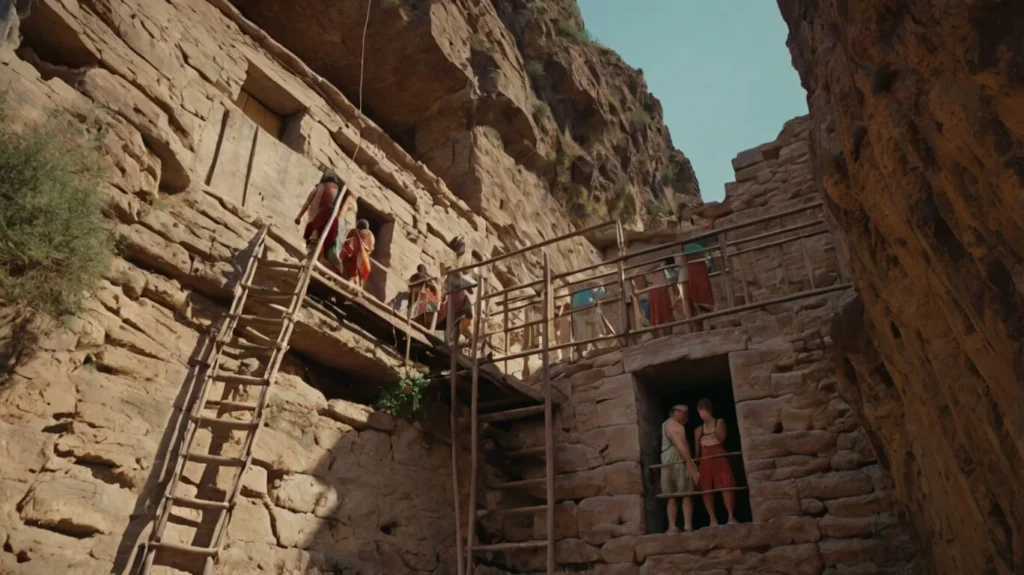
The tour of Balcony House is an immersive journey into the past. Visitors crawl through a 12-foot tunnel, ascend a 32-foot ladder, and navigate narrow passageways, all while learning about the innovative construction techniques and defensive features that made Balcony House a secure and functional home. The panoramic views from the balconies and the sense of accomplishment after the tour add to the unique appeal of this site.
Long House: Second Largest Cliff Dwelling

Long House, located on Wetherill Mesa, is the second largest cliff dwelling in Mesa Verde National Park. This expansive site features around 150 rooms and 21 kivas, similar in scale and significance to Cliff Palace. Long House is notable for its open, community-oriented layout, which includes a large central plaza that likely served as a gathering place for social and ceremonial activities.
Visitors to Long House can enjoy a more relaxed and less crowded experience compared to other major sites. The tour involves a moderate hike and provides ample opportunities to explore the extensive rooms and kivas, as well as the unique features such as a spring and a reservoir. The setting of Long House, with its sweeping views and serene atmosphere, offers a tranquil and reflective journey into the world of the Ancestral Puebloans.
Spruce Tree House: Well-Preserved and Accessible

Spruce Tree House is one of the best-preserved and most accessible cliff dwellings in Mesa Verde National Park. Constructed between 1211 and 1278 AD, it consists of 130 rooms and 8 kivas, built into a natural alcove that has helped protect it from the elements. This site is easily accessible, making it a popular choice for visitors of all ages and physical abilities.
The preservation of Spruce Tree House allows for a vivid and detailed exploration of the Ancestral Puebloans’ daily lives. Visitors can see original construction features, including wooden beams and plastered walls, and gain a deeper understanding of the architectural techniques and community organization. The site is located near the park’s museum, providing additional context and information about the Puebloans and their culture.
Activities and Tours in Mesa Verde National Park
Ranger-Guided Tours: Benefits and Options
Ranger-guided tours in Mesa Verde National Park offer an enriching and informative experience, allowing visitors to delve deeper into the history, culture, and architecture of the Ancestral Puebloans. These tours, led by knowledgeable park rangers, provide context and insights that enhance the appreciation of the archaeological sites.
- Benefits
- Educational Insights: Rangers share detailed historical and cultural information, offering a deeper understanding of the sites.
- Access to Restricted Areas: Some cliff dwellings are only accessible through guided tours, providing exclusive access to these remarkable structures.
- Interactive Experience: Visitors can ask questions and engage in discussions, making the tour more interactive and personalized.
- Options
- Cliff Palace Tour: The most popular tour, offering a comprehensive exploration of the largest cliff dwelling.
- Balcony House Tour: A more adventurous tour, requiring climbing ladders and crawling through tunnels.
- Long House Tour: A less crowded option on Wetherill Mesa, providing a relaxed and extensive exploration.
- Twilight Photography Tour: A unique opportunity for photographers to capture the sites in the soft evening light.
Hiking Trails: Best Trails for Different Skill Levels
Mesa Verde National Park boasts a variety of hiking trails that cater to all skill levels, from easy walks to challenging backcountry hikes.
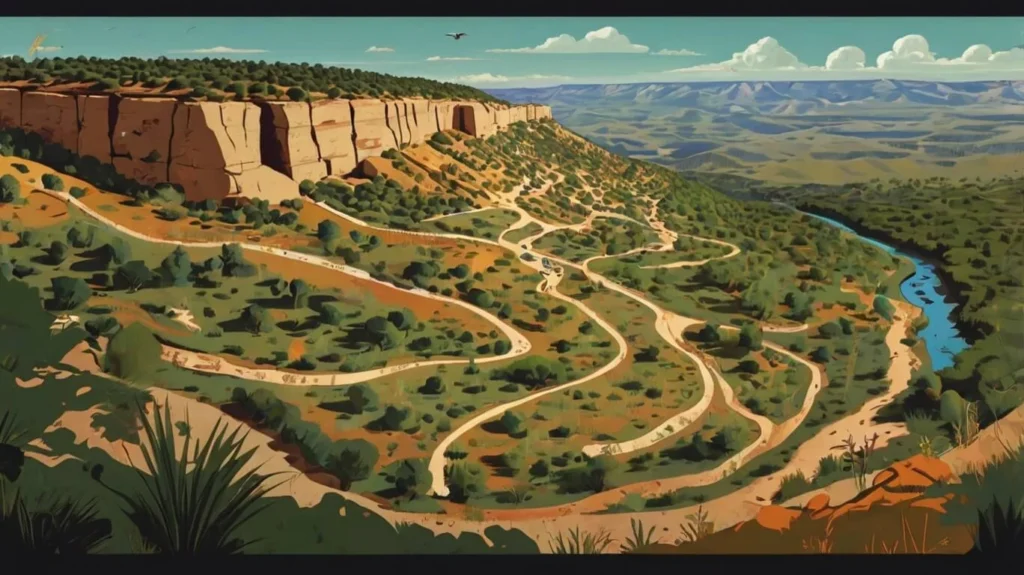
- Easy Trails
- Petroglyph Point Trail: A 2.4-mile round-trip hike that offers views of petroglyphs and panoramic vistas of the canyon.
- Spruce Canyon Trail: A 2.4-mile round-trip hike through a serene canyon, starting near Spruce Tree House.
- Moderate Trails
- Prater Ridge Trail: A 7.8-mile loop trail that offers expansive views of the Montezuma Valley and surrounding mountains.
- Navajo Canyon Trail: A 4.6-mile round-trip hike that provides stunning views of the canyon and opportunities for wildlife spotting.
- Strenuous Trails
- Nordenskiöld Site No. 16 Trail: A 2-mile round-trip hike to an archaeological site, with a steep ascent and descent.
- Wetherill Mesa Trails: Various trails that explore the remote Wetherill Mesa, offering a more rugged and secluded hiking experience.
Wildlife Spotting and Photography Tips
Mesa Verde National Park is home to a diverse array of wildlife, providing ample opportunities for wildlife enthusiasts and photographers.
Wildlife Spotting
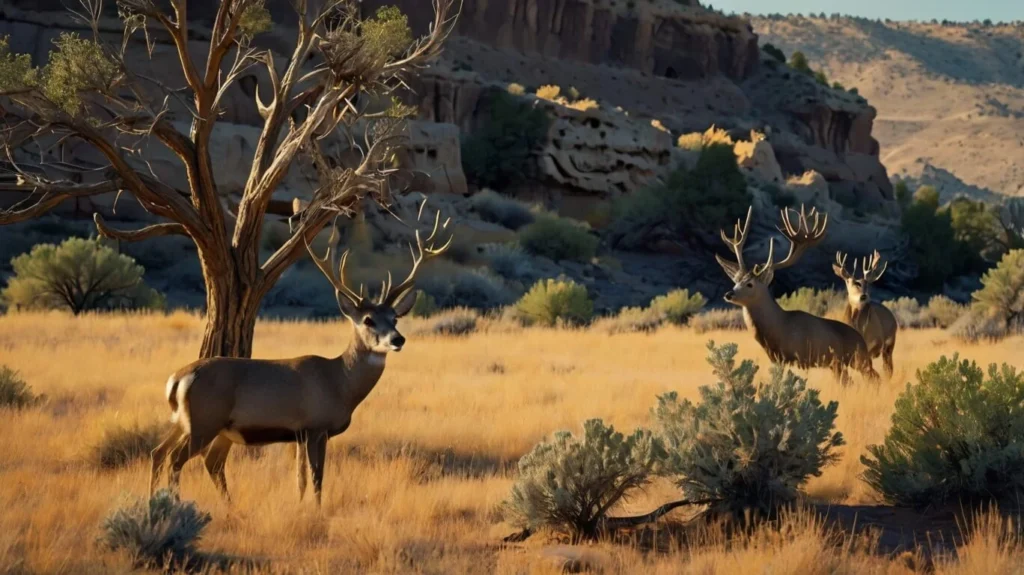
- Early Morning and Late Evening: The best times to spot wildlife such as mule deer, wild turkeys, and coyotes.
- Remote Areas: Less trafficked areas like Wetherill Mesa and the Prater Ridge Trail offer better chances to see wildlife.
- Binoculars and Patience: Bring binoculars and be patient; moving quietly and slowly increases the likelihood of sightings.
Photography Tips
- Golden Hours: Early morning and late afternoon light provide the best conditions for photography.
- Use a Telephoto Lens: For capturing wildlife from a distance without disturbing them.
- Composition: Frame your shots to include the stunning landscape, using natural features to guide the viewer’s eye.
- Tripod and Remote Shutter: For stable shots, especially in low light conditions.
Night Sky Programs: Stargazing Opportunities
Mesa Verde National Park is designated as an International Dark Sky Park, making it an ideal location for stargazing and night sky programs.
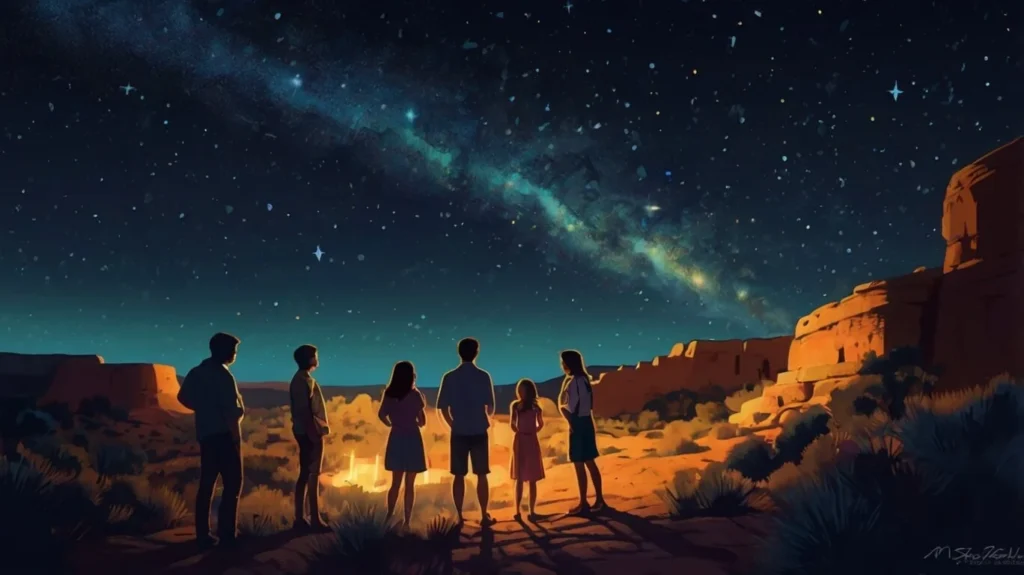
Stargazing Opportunities
- Ranger-Led Night Sky Programs: These programs provide guided stargazing sessions, where rangers share information about the constellations, planets, and astronomical phenomena.
- Star Parties: Special events where visitors can use telescopes and other equipment to view celestial objects.
- Best Viewing Locations: Far View Lodge and Morefield Campground offer excellent stargazing conditions with minimal light pollution.
Tips for Stargazing
- Bring a Red-Flashlight: To preserve night vision while moving around in the dark.
- Use a Star Chart or Mobile App: To aid in identifying constellations and planets during your stargazing experience.
- Dress Warmly: Even in summer, nighttime temperatures can drop significantly.
Engaging in these activities and tours allows visitors to fully immerse themselves in the rich history, natural beauty, and cultural heritage of Mesa Verde National Park, creating a memorable and enriching experience.
Hotels Near Mesa Verde National Park
Far View Lodge: On-Site Accommodation Within the Park
Far View Lodge is the only lodging option located within Mesa Verde National Park, offering a unique and convenient stay for visitors. Nestled at an elevation of 8,250 feet, the lodge provides stunning panoramic views of the park’s diverse landscape. Guests can enjoy a serene environment, surrounded by nature and wildlife, while still having easy access to the park’s main attractions.

Amenities and Features
- Rooms: Cozy, rustic-style rooms with private balconies offering breathtaking views.
- Dining: On-site restaurant, Metate Room, serving locally inspired cuisine.
- Activities: Easy access to hiking trails and ranger-guided tours.
- Proximity: Located near key archaeological sites, including Cliff Palace and Balcony House.
Staying at Far View Lodge enhances the Mesa Verde experience, allowing guests to fully immerse themselves in the park’s beauty and history.
Cortez: A Convenient Base with a Variety of Hotels and Amenities
Cortez, located just 10 miles from the entrance of Mesa Verde National Park, is a convenient and popular base for visitors. The town offers a wide range of accommodations, from budget motels to mid-range hotels and charming bed-and-breakfasts, catering to all types of travelers.
Amenities and Features
- Accommodations: Options range from well-known hotel chains like Holiday Inn Express and Best Western to local inns and motels.
- Dining: A variety of restaurants, cafes, and diners serving diverse cuisines.
- Services: Grocery stores, gas stations, and other essential services.
- Activities: Nearby attractions include the Cortez Cultural Center and the Anasazi Heritage Center.
Cortez provides a perfect balance of convenience, comfort, and access to local culture and amenities, making it an ideal place to stay while exploring Mesa Verde.
Mancos: Quaint Town with Charming Lodging Options
Mancos, a small town located about 20 miles from the park, offers a more quaint and intimate lodging experience. Known for its artistic community and charming atmosphere, Mancos is an excellent choice for visitors seeking a peaceful retreat with a touch of local flavor.
Amenities and Features
- Accommodations: Unique options like the Mancos Inn, bed-and-breakfasts, and rustic cabins.
- Dining: Local eateries and cafes, often featuring farm-to-table and organic options.
- Atmosphere: A friendly, small-town vibe with art galleries, shops, and local events.
- Activities: Proximity to the Mancos State Park and opportunities for horseback riding and hiking.
Staying in Mancos provides a cozy, authentic experience, perfect for those looking to unwind and connect with the local community.
Durango: Combining Proximity with Additional Tourist Attractions
Durango, located approximately 35 miles from Mesa Verde National Park, offers a blend of proximity to the park and a host of additional tourist attractions. This vibrant town is known for its historic charm, outdoor adventures, and lively cultural scene.
Amenities and Features
- Accommodations: A variety of lodging options, including luxury hotels, historic inns, and budget-friendly motels.
- Dining: A wide range of dining experiences, from gourmet restaurants to casual pubs.
- Attractions: Durango & Silverton Narrow Gauge Railroad, historic downtown area, and numerous festivals and events.
- Activities: Outdoor adventures such as river rafting, mountain biking, and skiing in winter.
Durango is an excellent choice for visitors who want to combine their Mesa Verde visit with a dynamic town experience, offering plenty to see and do beyond the park.
Every one of these communities and hotel choices has special advantages that suit a range of tastes and improve the overall Mesa Verde National Park experience. There is the perfect lodging choice to meet your preferences, whether you like the ease and immersion of staying inside the park, the diversity and amenities of Cortez, the charming small town of Mancos, or the energetic environment of Durango.
Visiting Mesa Verde National Park: Practical Tips
Best Times of Year to Visit
Mesa Verde National Park is a year-round destination, but the best times to visit are in the spring (April to June) and fall (September to October). During these seasons, the weather is mild, and the park is less crowded, providing an ideal environment for exploring the archaeological sites and hiking trails. Summer (July to August) is the peak season, offering warm weather and extended daylight hours, but it can also be more crowded. Winter (November to March) offers a unique, tranquil experience with fewer visitors, but some facilities and trails may be closed due to snow.
What to Pack and Wear
When visiting Mesa Verde, it’s essential to pack and dress appropriately for the diverse conditions and activities.
Essentials
- Clothing: Layered clothing for varying temperatures, sturdy hiking boots, a hat, and sunglasses.
- Weather Gear: Rain jacket or poncho, especially during summer thunderstorms.
- Water and Snacks: Ample water and high-energy snacks to stay hydrated and fueled.
- Backpack: A comfortable backpack to carry essentials during hikes and tours.
- Sun Protection: Sunscreen and lip balm with SPF to protect against the high-altitude sun.
Additional Items
- Camera: To capture the stunning scenery and archaeological sites.
- Binoculars: For wildlife spotting and distant views.
- Guidebook/Map: To navigate the park and enhance your understanding of the sites.
Accessibility Information
Mesa Verde National Park is committed to providing accessibility for all visitors. Here are some key points:
- Accessible Facilities
- Visitor Centers: Accessible entrances, restrooms, and exhibits.
- Cliff Palace Loop Road: Accessible restrooms and picnic areas.
- Cliff Palace: Limited accessibility; contact the park for specific accommodations.
- Programs and Services
- Ranger-Guided Tours: Some tours are wheelchair accessible; check with the park for details.
- Assistive Listening Devices: Available for ranger programs upon request.
- Service Animals: Permitted in all areas of the park.
For detailed information on accessibility, visitors can contact the park directly or check the National Park Service website.
Park Regulations and Etiquette
Respecting park regulations and practicing good etiquette ensures the preservation of Mesa Verde’s natural and cultural resources for future generations.
- Regulations
- Stay on Trails: Protect archaeological sites and natural habitats by staying on designated trails.
- No Climbing: Climbing or touching the cliff dwellings and structures is prohibited.
- Leave No Trace: Pack out all trash and leave the park as you found it.
- Etiquette
- Respecting Wildlife: Ensure the well-being of animals by observing them from a respectful distance and refraining from feeding or disturbing them in their natural habitat.
- Quiet Enjoyment: Keep noise levels low, especially around archaeological sites and wildlife areas.
- Consider Other Visitors: Be courteous and share the trails and facilities responsibly.
Conclusion & FAQs
Mesa Verde National Park is a treasure trove of archaeological wonders and natural beauty, offering a glimpse into the rich history of the Ancestral Puebloans. From the impressive Cliff Palace and Balcony House to the serene hiking trails and stargazing opportunities, the park provides an unforgettable experience for all visitors.
We encourage you to plan your visit to Mesa Verde National Park and immerse yourself in the awe-inspiring landscapes and cultural heritage. Whether you’re exploring the cliff dwellings, hiking through scenic canyons, or simply enjoying the tranquility of the park, Mesa Verde promises a journey of discovery and wonder.
Start planning your trip today and share your experiences with others. Mesa Verde National Park awaits your exploration and appreciation.
Frequently Asked Questions (FAQs)
What is the best time of year to visit Mesa Verde National Park?
April through June in the spring and September through October in the fall are the ideal seasons to explore Mesa Verde National Park. The park is less crowded, and the temperature is moderate throughout these seasons. Summer (July to August) is hotter and has longer days, but it can also be more crowded. Winter (November through March) offers a special, peaceful experience, albeit snow may close some routes and facilities.
How much does it cost to enter Mesa Verde National Park?
Entrance fees vary by vehicle and time of year. For private vehicles, the fee is $30.00 (May 1-Oct 22) and $20.00 (Oct 23-Apr 30). Motorcycles are $25.00 (May 1-Oct 22) and $15.00 (Oct 23-Apr 30). Individuals (on foot or bicycle) are charged $15.00 year-round. An annual pass for Mesa Verde is $55.00, and the America the Beautiful Pass, which grants access to all federal recreation sites, is $80.00 annually.
What should I pack for a trip to Mesa Verde National Park?
When visiting Mesa Verde, pack layered clothing for varying temperatures, sturdy hiking boots, a hat, sunglasses, and sun protection. Bring a rain jacket, ample water, high-energy snacks, a comfortable backpack, a camera, binoculars, and a guidebook or map.
Are there accommodations within Mesa Verde National Park?
Yes, Far View Lodge is the only lodging option within the park, offering rustic-style rooms with private balconies and an on-site restaurant. Staying here provides easy access to the park’s main attractions and a unique, immersive experience.
What are some nearby towns with lodging options for Mesa Verde visitors?
Nearby towns include Cortez, Mancos, and Durango. Cortez, just 10 miles from the park entrance, offers a variety of hotels and amenities. Mancos, a quaint town 20 miles away, provides charming lodging options. Durango, about 35 miles from the park, combines proximity with additional tourist attractions and a range of accommodations.
Are there guided tours available in Mesa Verde National Park?
Yes, ranger-guided tours are available and offer detailed historical and cultural insights. These tours provide access to restricted areas and enhance the overall experience. It is recommended to check tour schedules and availability in advance.
Is Mesa Verde National Park accessible for visitors with disabilities?
Mesa Verde National Park is committed to accessibility. Many facilities, including visitor centers and restrooms, are accessible. Some ranger-guided tours and trails are also wheelchair accessible. For specific accommodations, visitors can contact the park directly or check the National Park Service website.
What are the regulations and etiquette for visiting Mesa Verde National Park?
Visitors should stay on designated trails, avoid climbing or touching cliff dwellings, and practice Leave No Trace principles by packing out all trash. Respect wildlife by observing from a distance and keeping noise levels low around archaeological sites and wildlife areas. Being courteous and sharing trails and facilities responsibly is also important.
What are some major attractions in Mesa Verde National Park?
Major attractions include Cliff Palace, the largest cliff dwelling; Balcony House, known for its challenging tour with ladders and tunnels; Long House, the second largest cliff dwelling; and Spruce Tree House, a well-preserved and accessible site.
What activities can I do in Mesa Verde National Park?
Activities in Mesa Verde include ranger-guided tours, hiking, wildlife spotting, photography, and night sky programs for stargazing. The park offers trails for different skill levels and opportunities to explore the rich archaeological and natural heritage.
